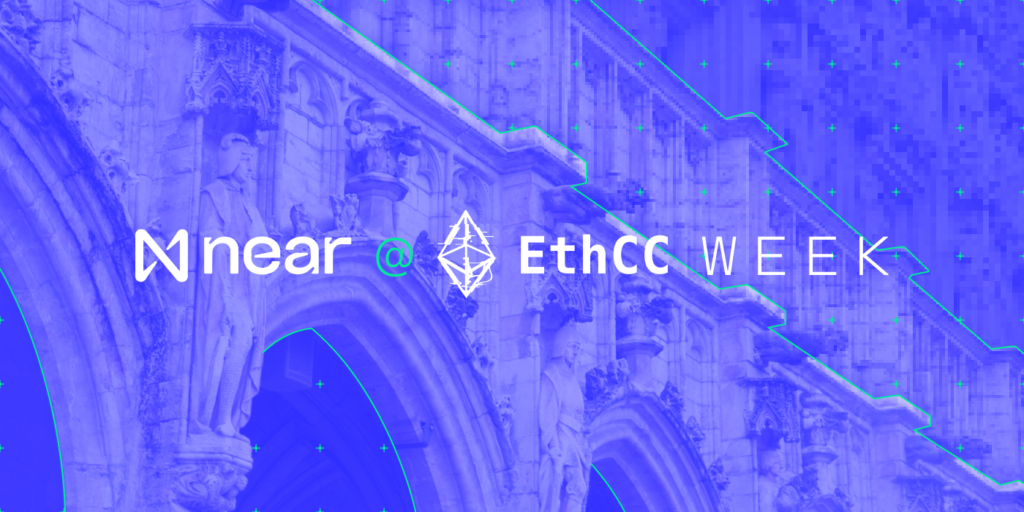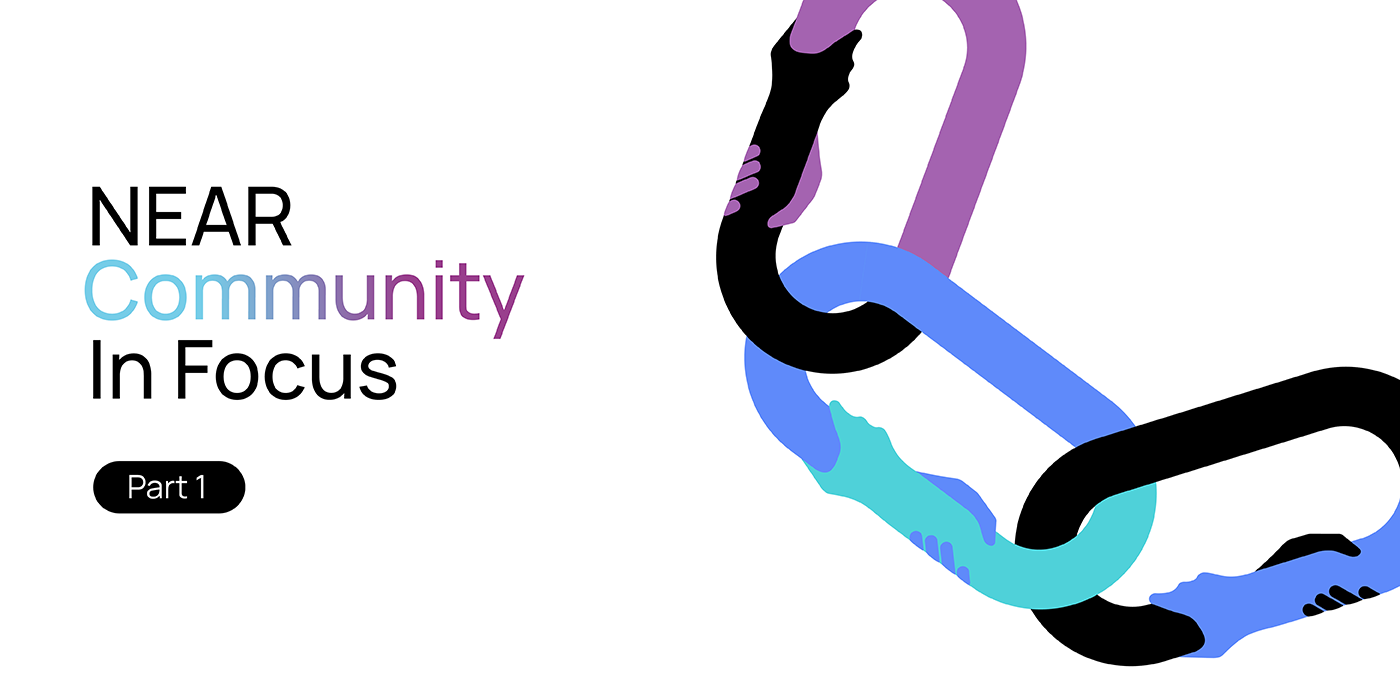NEAR Community in Focus: Web3 vs Web2 Communities
Each new wave of cultural and technological change brings with it a redefinition of community. As the world shifts from the centralized Web2 paradigm to the burgeoning world of Web3, communities are undergoing rapid redefinitions. In this shift, communities are reimagining how they organize, what they do, and how individuals can ultimately benefit.
“Web2 communities happen around a product rather than an organic network of like-minded people gearing up to contribute towards a long-term goal,” says Max Goodman, founder of Gyde, a low-cost resource directory designed to help all manner of communities in Web3.
“User interaction is primarily with marketing officials or customer service or other users, not key decision-makers in the organization,” Max continues. “Web2, as a rule, does not share value with builders and users. Instead, it extracts value.”
Goodman touches on one of the most important differentiators between Web2 and Web3 communities. But combating an extractive, centralized model is only the tip of the iceberg. Here’s a deeper look at how Web3 communities are evolving, and the role that builders on NEAR are playing.
Correcting for Web2 biases against the underclass
Goodman is building Gyde as a response to one of Web2 biggest issues: how entities approach community. In Web2, biases can exclude certain marginalized groups or members of the underclass. Google Maps and other location-based search applications, for instance, don’t show relevant or helpful services those living in poverty. This top-down approach is something Web3 projects, particularly Decentralized Autonomous Organizations (DAOs), are turning on its head.
“I’m bullish on cooperative, non-hierarchical, ‘impact DAOs,’ that focus on social good,” Goodman continues. “We can now break free of traditional hierarchical structures and move towards communities or networks, rather than top-down entities. This can be done without replicating existing problematic behaviors such as excluding traditionally marginalized folks from participation.”
With Gyde, Goodman is striving to build a viable alternative to traditional Web2 map-based search applications. One that is based on the needs and values of individual communities, not what any centralized entity dictates. Goodman also plans to implement an impact DAO, so that community members can earn tokens for adding new locations like food banks or non-profit services, in addition to those who post helpful reviews.
“We’re building community in-person first,” explains Goodman. “We’re onboarding traditionally excluded people into crypto, onto NEAR specifically, with one-on-one educational meetings. And the best part is that this helps solve the non-profit problem of connecting with their clients fast. We like to call it map-to-earn.”
Impact DAOs and Web3 projects like Gyde are addressing the needs of marginalized communities and the “Unexotic Underclass”. Communities that Web2 has largely ignored.
“It’s not uncommon to believe that poor people do not understand technology or advanced topics,” Goodman points out. “But homeless people were mining Bitcoin to pay for pizza with their laptops in San Francisco in 2013. Society oftentimes implicitly excludes the unexotic underclass by requiring IDs for work. A NEAR address does not care.”
From consumers to participants in musical communities
Goodman and Gyde hint at another defining difference between Web2 and Web3 communities: the economic model and resource distribution. Web2 companies tend to view individuals as consumers or users. In Web3, people are more akin to creators, contributors, and stakeholders on a more level economic playing field.
“What communities want, need, and what brings them together hasn’t really changed in millennia,” says Tim Exile, founder of collaborative music platform Endless.fm. “What’s changed is the technology and the products people built on top of that technology. Web2 hasis been effective at leveraging a broad, one-to-many cost dynamic. That’s why we see a skewed distribution of producers and consumers in the ‘going viral’ attention economy.”
With Endless.fm, Exile is attempting to re-define economic models for Web3 creative communities, building on the NEAR blockchain. With Endless.fm, individuals can enter collaborative “jam sessions” with musicians. The can sample music,and create music NFTs in what Exile and others have referred to as the “creator-owned economy”. The beauty of Web3 community is that it erases hierarchical boundaries between music creators and consumers, allowing for a more open economy.
“Industrial media is very binary—either you’re a producer or a consumer,” Exile explains. “But in Web3, everyone is a participant. And those who are the most intrinsically motivated to lean in and participate in communities can be rewarded and empowered more economically.”
Exile explains that the most fundamental shift occurring within music-driven communities is that association and context are becoming more valuable than pre-packaged experiences. Rather than paying $30 to attend a concert, people can create music socially with other community members in real-time, mint their own music NFTs, and decide on the price or value of their music on the open market.
“With Endless, we’re unbundling music in a way that’s much more about creating context than it is about creating content,” he says. “In Web3 communities, ultimately the value is really driven by relationships, interactions, histories, and stories. And that’s what we’re building towards.”
Empowering sports clubs and communities
Sports teams, clubs, and communities are other areas where Web3 is poised to disrupt where Web2 could not. In Web2, the dynamic is very similar to what Exile describes in music: a one-to-many distribution model that’s not all that participatory.
“The NFT wave has been very popular amongst the top one percent of professional athletes,” says Kyle Ludon, VP of product management at Stack Sports. “But the truth is that 99 percent of athletes aren’t professional, and these people aren’t being addressed with this new wave of technology.”
Ludon points to the projects that Stack Sports is building on NEAR using NFT technology as a way to build sports communities from the ground up. A parent who attends their child’s soccer game and captures a picture of their first goal, for instance, can upload that image and mint it as an NFT “trading card.” They can even add unique design elements to the digital collectible. Aside from being cool digital keepsakes, Ludon projects that NFTs can open doors for communities like little league teams, cycling clubs, and social or passion-based athletic groups.
“Athletes and parents can share NFTs of their special moments and even trade them amongst each other. You might even create a DAO around your club or team, use the NFT as a form of membership, and even implement voting or governance,” posits Ludon.
This is already coming to fruition with SailGP’s partnership with NEAR, in which DAO will eventually own a sailing team. In Web2, sports are more about corporations, franchises, and elite athletes selling products or experiences via hierarchically designed communities on platforms like Facebook. In Web3, athletes and enthusiasts can mint and exchange NFTs, create their own DAOs, and directly organize with like-minded enthusiasts.
A distributed notion of society
These are just a few examples of how the nature and definitions of community are changing in real-time. Endless.fm, Stack Sports, and Gyde are all using the NEAR blockchain to make communities more inclusive, collaborative, and economically prosperous.
“In Web3, no one really cares that you’re labeled as marginalized in general society,” summarizes Goodman from Gyde. “They care about your skills and ability to communicate. We’re embracing a distributed notion of community, which will create larger opportunities for participation in the Web3 economy.”
Check out the complete series on the NEAR Community:
Share this:
Join the community:
Follow NEAR:
More posts from our blog



